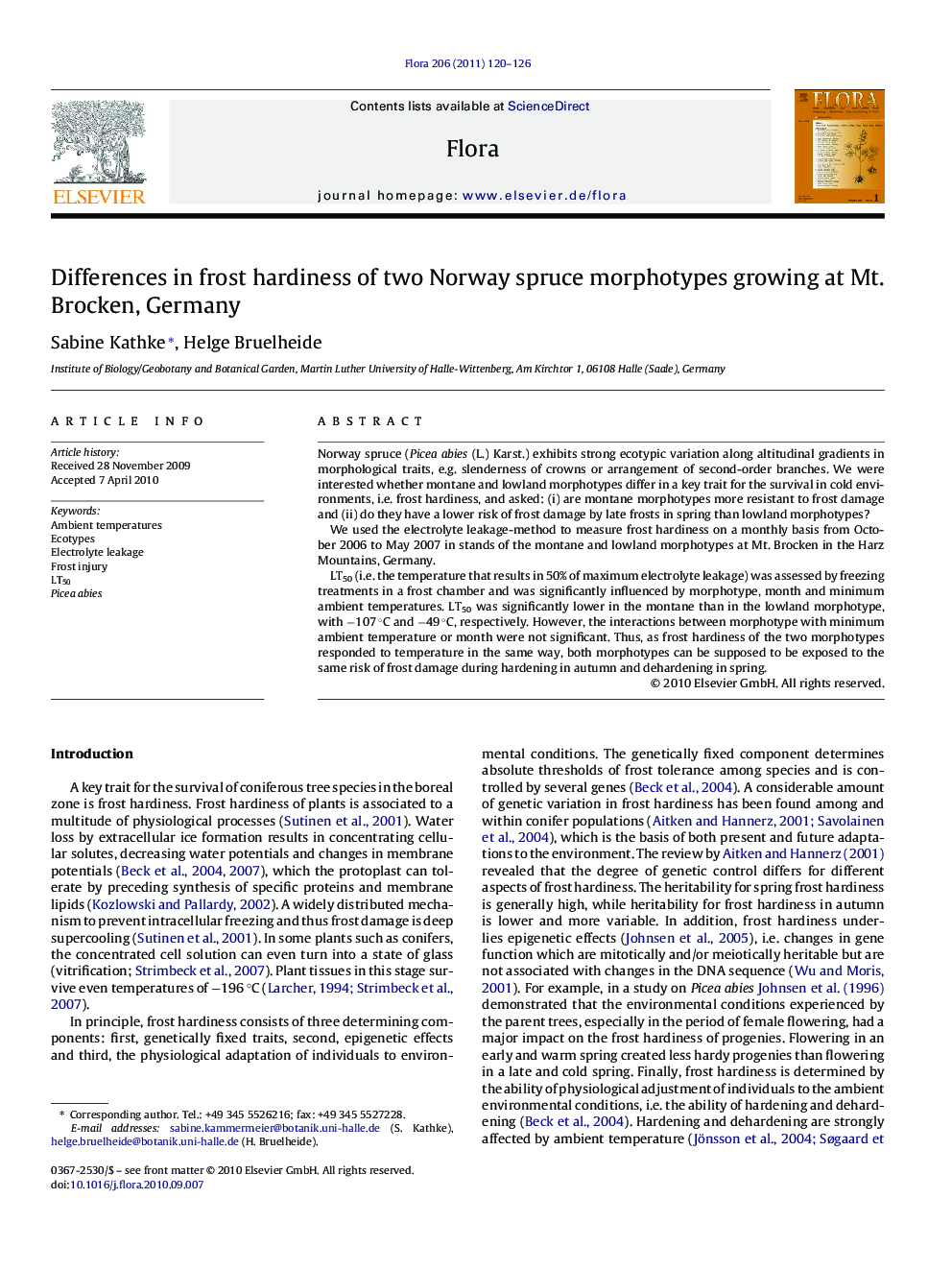| Article ID | Journal | Published Year | Pages | File Type |
|---|---|---|---|---|
| 2179915 | Flora - Morphology, Distribution, Functional Ecology of Plants | 2011 | 7 Pages |
Norway spruce (Picea abies (L.) Karst.) exhibits strong ecotypic variation along altitudinal gradients in morphological traits, e.g. slenderness of crowns or arrangement of second-order branches. We were interested whether montane and lowland morphotypes differ in a key trait for the survival in cold environments, i.e. frost hardiness, and asked: (i) are montane morphotypes more resistant to frost damage and (ii) do they have a lower risk of frost damage by late frosts in spring than lowland morphotypes?We used the electrolyte leakage-method to measure frost hardiness on a monthly basis from October 2006 to May 2007 in stands of the montane and lowland morphotypes at Mt. Brocken in the Harz Mountains, Germany.LT50 (i.e. the temperature that results in 50% of maximum electrolyte leakage) was assessed by freezing treatments in a frost chamber and was significantly influenced by morphotype, month and minimum ambient temperatures. LT50 was significantly lower in the montane than in the lowland morphotype, with −107 °C and −49 °C, respectively. However, the interactions between morphotype with minimum ambient temperature or month were not significant. Thus, as frost hardiness of the two morphotypes responded to temperature in the same way, both morphotypes can be supposed to be exposed to the same risk of frost damage during hardening in autumn and dehardening in spring.
